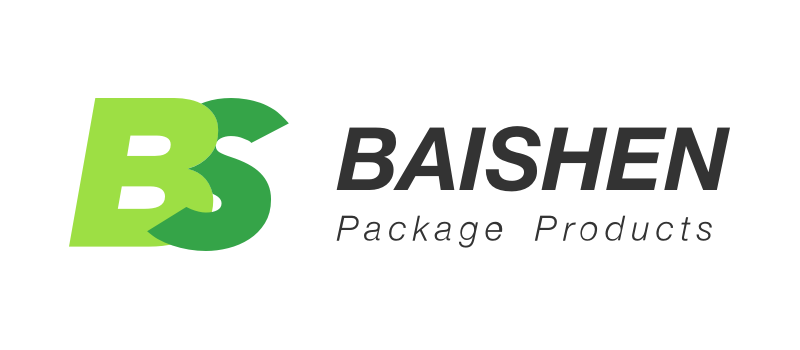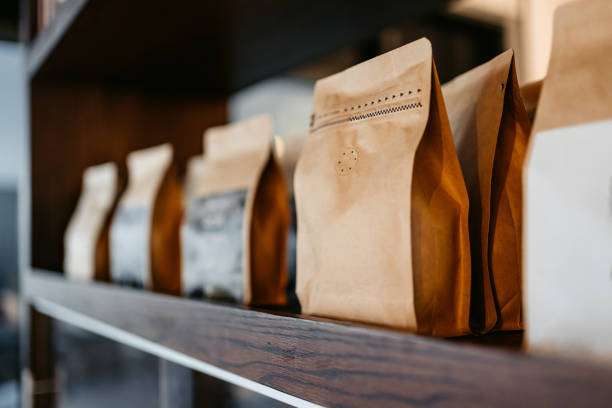Your packaging is not just a container in the busy coffee world. It is a silent salesman, a brand ambassador, and the initial guarantee of quality to your customers. As a boutique roaster trying to create a unique brand narrative, a large-scale producer with a complex supply chain, or a distributor trying to bring market-leading products to the market, your packaging strategy is the key to success.
This comprehensive handbook will take you through all the steps of designing successful custom coffee packaging, including overall strategy and material science, design implementation, and production logistics. We will discuss the way to develop beautiful shelf appeal and still have the essential production efficiency.
Why Packaging Is Your Most Valuable Brand Asset
It is important to know the strategic purpose of packaging before getting into fonts and finishes. It is not a cost, it is one of your greatest assets. A properly done coffee bag is a versatile instrument that never sleeps on your brand.
-It is a Proof of Quality: The package is the initial tangible contact a customer will have with your coffee. A well-made bag, created by a team of experts, that is durable and printed well is a clear indication of a high-quality product on the inside. It guards the valuable aroma and taste against oxygen, moisture, and light so that the coffee will taste as good as the roaster made it.
-It is Your Most-Working Marketer: In a busy retail shelf or an e-commerce page, your packaging has a few seconds to make an impression. It conveys the personality of your brand, are you minimalist and modern, rustic and traditional, or playful and bold? It narrates your story and links consumers to the source of the coffee, the farmers, and the mission of your brand.
-It Establishes Your Brand Position: Is your coffee a cheap everyday drink or a luxury single-origin coffee? The materials used, the complexity of the design, and the ample space for special features (such as degassing valves and high-quality zippers) will instantly establish the expectations of the customer and make your price worth it. As a distributor and co-packer, you can provide a variety of packaging solutions and service clients on this whole spectrum.
Case Studies of Successful Coffee Packaging Design
Sometimes the best way to learn is to peek at what others are doing right. So let’s look at a few real-world examples of coffee bag design that nailed it—not just because they look great, but because they resonated with consumers, told a story, and built trust. These case studies can give you a clearer picture of what works—and why.
Verve Coffee Roasters – Clean, Consistent Minimalism
The packaging of Verve has become a trademark in the specialty coffee world. They employ a clean, matte white bag with a small label that varies depending on the origin. Every label has roast level, region, and tasting notes, no fluff, just facts.
Why it works: Verve has an audience that cares about clarity and quality. The simple coffee bag design is an indicator of professionalism and openness. And it is also nice on shelves and in photos.
Consumer psychology: This appeals to coffee drinkers who want to feel in control of what they’re drinking. The clean look gives them confidence that they’re buying something premium and carefully curated.
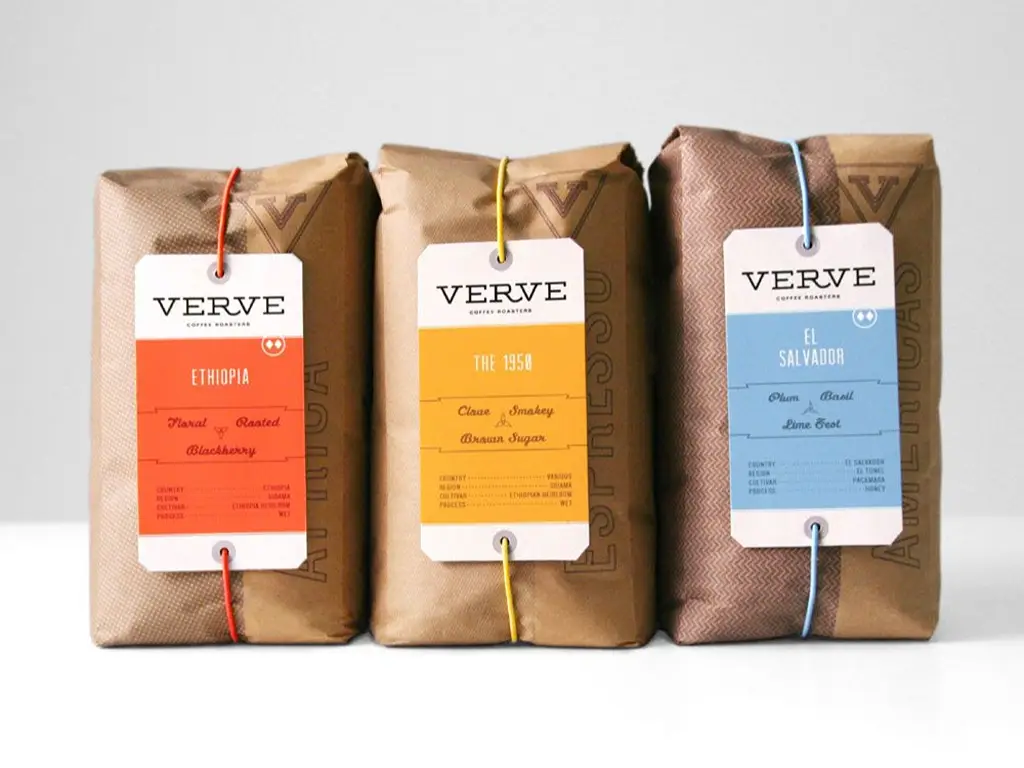
(source:https://www.cliftonpackaging.com.mx/bolsas-para-cafe-impresas/)
Onyx Coffee Lab – Dark Luxury Meets Artistic Flair
Onyx is evidence of the fact that daring can still be elegant. Their bags are black and gold foil, and each type has its illustrations. The packaging is a high-end experience with the use of tactile elements and heavyweight material.
Why it works: Onyx is craft, quality, and edge. Those values are physically and visually reflected in their coffee packaging design. Their more expensive price is justified by the luxurious appearance, but the design remains friendly and cool.
Consumer psychology: This hits the sweet spot between luxury and accessibility. Customers who buy Onyx want to feel like insiders—like they’ve discovered something elevated that not everyone knows about.
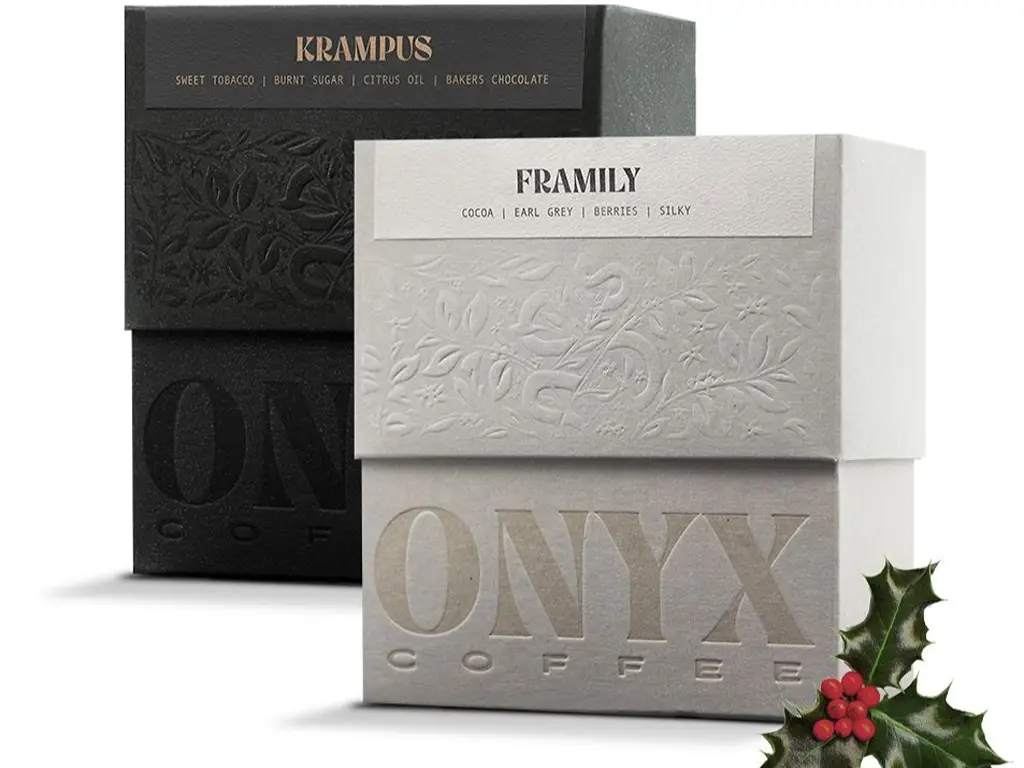
(source:https://onyxcoffeelab.com/)
Driftaway Coffee – Personalized and Transparent
Driftaway is a next-level storytelling. Every custom coffee bag has the name of the farmer, the country of origin, and even a small message of the producer. Subscribers receive bags that suit their taste.
Why it works: They are not just selling beans; they are selling a relationship. The design of Driftaway makes you feel like a part of a community and makes you connect with the supply chain.
Consumer psychology: This appeals to the conscience of the morally conscious consumers. The brand that makes it personal by telling you who grew your coffee creates emotional investment and loyalty.
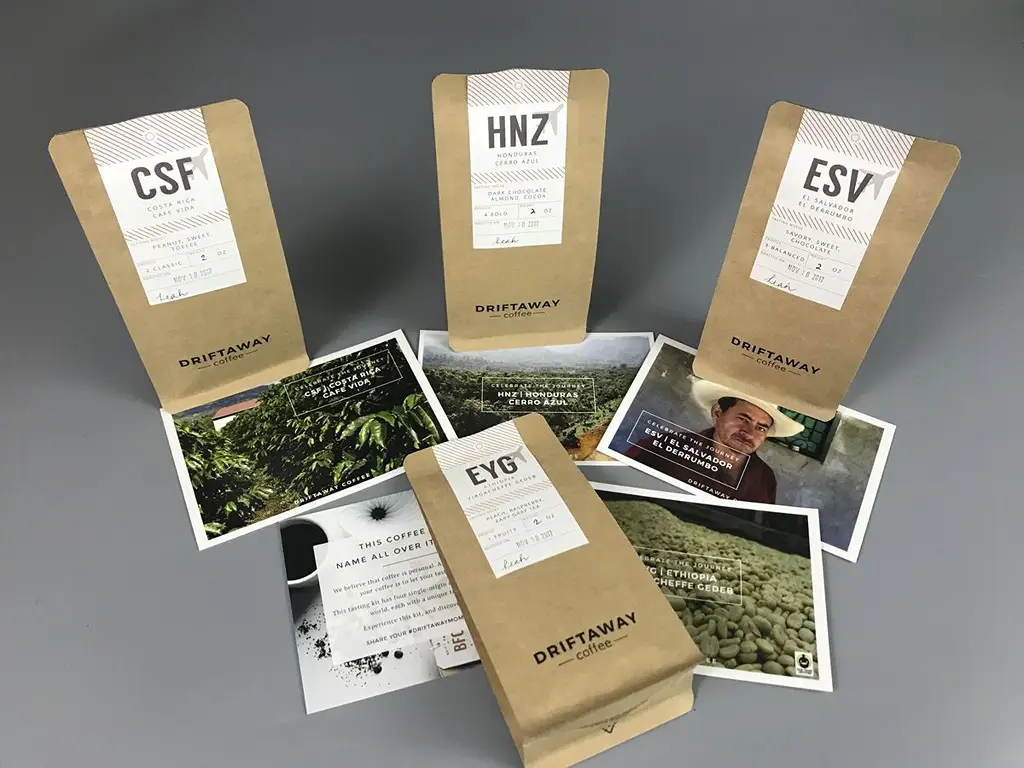
(source:https://hellosubscription.com/2017/12/driftaway-coffee-november-2017-subscription-box-review/)
What You Can Learn
– Minimalism or luxurious opulence is the way to go when your brand is premium and detail-oriented.
To create emotional bonds, you need to be transparent and tell stories.
– In case you are dealing with a younger and more active audience, then bright colors and fun layouts will be a success.
– Coffee bag design was a strategic tool in the hands of each of these brands, not a branding afterthought. They knew their customers, and they created a design that appealed to them. That is what makes packaging good, but great.
To assist you in making a decision, we will take a glance at the most popular design styles and how they fit various brand requirements.
| Design Style | Key Characteristics | Best For… | Why It Works |
| Minimalist & Modern | Clean lines, ample white space, simple typography, limited color palette. | Boutique/premium brands, single-origin specialists, brands targeting design-conscious consumers. | Communicates sophistication, purity, and confidence. Focuses attention on the product itself. |
| Vintage & Nostalgic | Hand-drawn illustrations, serif fonts, retro color schemes, textured paper. | Brands emphasizing heritage, traditional roasting methods, or a warm, approachable feel. | Evokes a sense of authenticity, craftsmanship, and trust. Creates an emotional connection. |
| Bold & Playful | Vibrant colors, abstract patterns, dynamic graphics, unique fonts create a strong impression. | Brands targeting a younger demographic, flavored coffees, or aiming to disrupt the market. | Grabs attention instantly on the shelf. Conveys energy, creativity, and excitement. |
| Informative & Terroir-Driven | Detailed maps, tasting note graphics, farm/farmer information, QR codes. | Specialty coffee brands focused on transparency, traceability, and coffee education. | Builds consumer trust and loyalty. Positions the brand as an expert and justifies a higher price. |
| Eco-Conscious | Natural Kraft paper, monochrome printing (less ink), visible eco-labels. | Organic, fair-trade, or environmentally-focused brands. | Directly communicates the brand’s values. Appeals to ethically-minded consumers. |
Factors Influencing Coffee Packaging Design
The development of the ideal package is a matter of striking a balance between a number of factors. A clear understanding of the following elements gives birth to a successful design:
– Coffee Type and Format: Whole beans are not the same as finely ground coffee or instant powder. The freshly roasted beans need one-way degassing valves to allow the CO2 to escape without allowing oxygen to enter, whereas the liquid coffee concentrates need spouted pouches with good barrier and leak-proof characteristics.
– Brand Identity and Positioning: Your packaging should be the visual representation of your brand’s identity. Clean typography and a minimalist design would be appropriate to a modern, high-end brand, whereas handcrafted illustrations and earthy colors would be more appropriate to an organic, farm-to-cup narrative.
– Target Audience: Who are you selling to? Commuters who are in a hurry may appreciate a one-serving, easy-to-open pack. The connoisseurs will enjoy the information about origin, tasting notes, and roast level printed on the bag in detail.
– Retail Environment: Where will you sell your coffee? In the case of e-commerce, the package should be photogenic and shippable. At a brick-and-mortar shop, it must be eye-catching on the shelf, maybe in a distinctive shape such as a flat-bottom bag or an eye-catching color scheme.
– Budget and Scale: The level of your production has a great impact on your decisions. Digital printing is ideal when it comes to small runs, seasonal or market testing with low MOQs. In large, repeat runs, the rotogravure printing is more economical. The complexity of materials, finishes, and features that you can include will be determined by your budget.
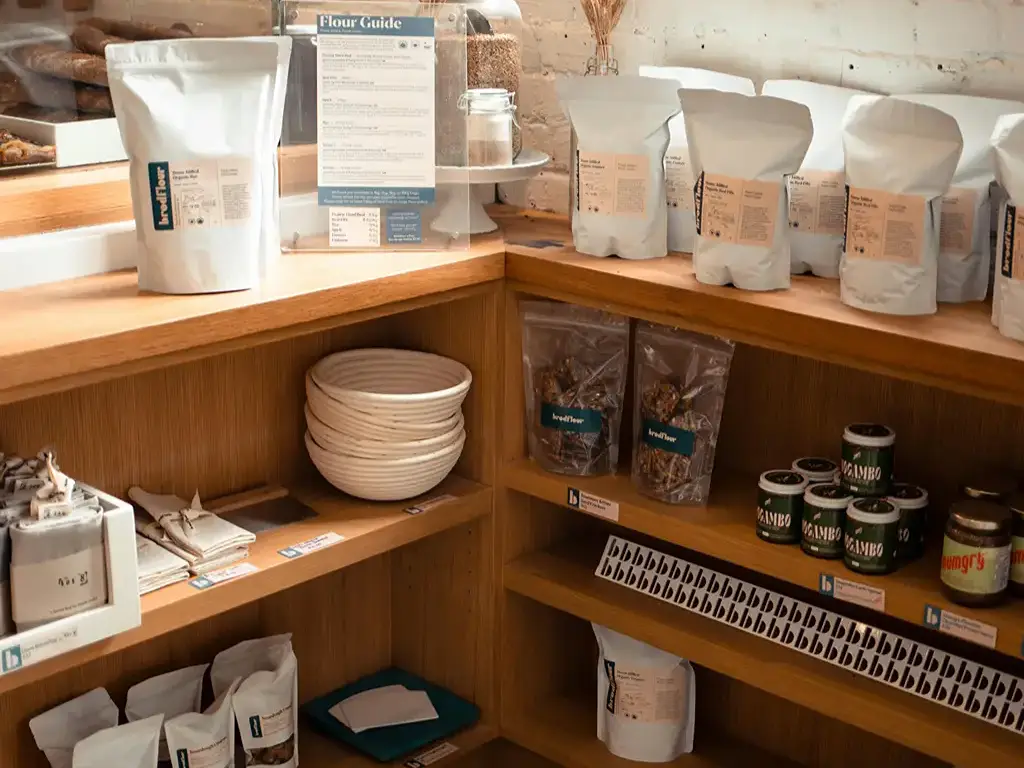
Choosing Materials: Sustainability, Cost, and Freshness
The material you select is the most critical technical decision in coffee packaging, and it directly affects product integrity, production cost, and brand perception. It is a tactical balance of three pillars.
1. Freshness & Protection:
The worst enemies of coffee are oxygen and moisture. The main purpose of your material is to form a strong barrier. The most protective high-barrier choices, such as foil (AL) and metallized films (VMPET), are suitable in the case of long shelf life and the preservation of fragile aromas, which is a major concern of producers and distributors. The mid-range materials are usually transparent films and can have design features such as a product window, which balances protection and visual attractiveness. The type of structure you use, whether a basic two-ply or a complicated five-layer laminate, is the key determinant of the quality of your coffee when you open it.
2. Cost and Production Efficiency:
Material is a direct translation of per-unit cost. A high-barrier bag with multiple layers is more costly than a simple structure, which is a critical calculation when it comes to large orders. Moreover, design is determined by materials. Colors are brought to life with glossy plastics and dulled down with uncoated Kraft paper that soaks up the ink. Your design vision should be able to fit with the properties of your material in order to be cost-effective and scalable to make.
3. Sustainability & Brand Story:
Materials are telling a story today. Kraft paper is a visual cue to an artisanal, natural attitude. Selecting compostable materials (such as PLA linings) or recyclable materials (such as mono-material PE) sends a strong message about your brand and its environmental responsibility. On the other hand, a soft-touch matte or a high-gloss metallic finish can be used to communicate luxury and high quality. The material you use is a physical manifestation of what your brand stands for.
These trade-offs are not easy to navigate. An experienced packaging partner will be able to examine your unique requirements to suggest a material that will safeguard your product, suit your budget, and convey your brand to the world in a powerful manner.
Coffee Packaging Design for Impact
An aesthetically pleasing package is not the whole war. Your design should be communicative to have the greatest impact.
Consider your package as a real estate. Each inch must have a reason. The front panel is to attract attention and position your brand. Here is where your logo, brand name, and main product differentiator (e.g. Single Origin Ethiopia Yirgacheffe) should be.
The gussets and back panel are used to build trust and give information. This is the space for:
– Your brand story
– Tasting notes (e.g., “Citrus, Berries, Floral”)
– Roast level and date
– Certifications (e.g., Fair Trade, Organic)
– Brewing instructions
– Legally required information (net weight, company address)
A well-designed information hierarchy guides that the customer’s eye follow the information logically, and it is easy to digest. The confidence can also be created through the use of such features as a transparent window that will enable the consumers to see the quality of the beans inside.
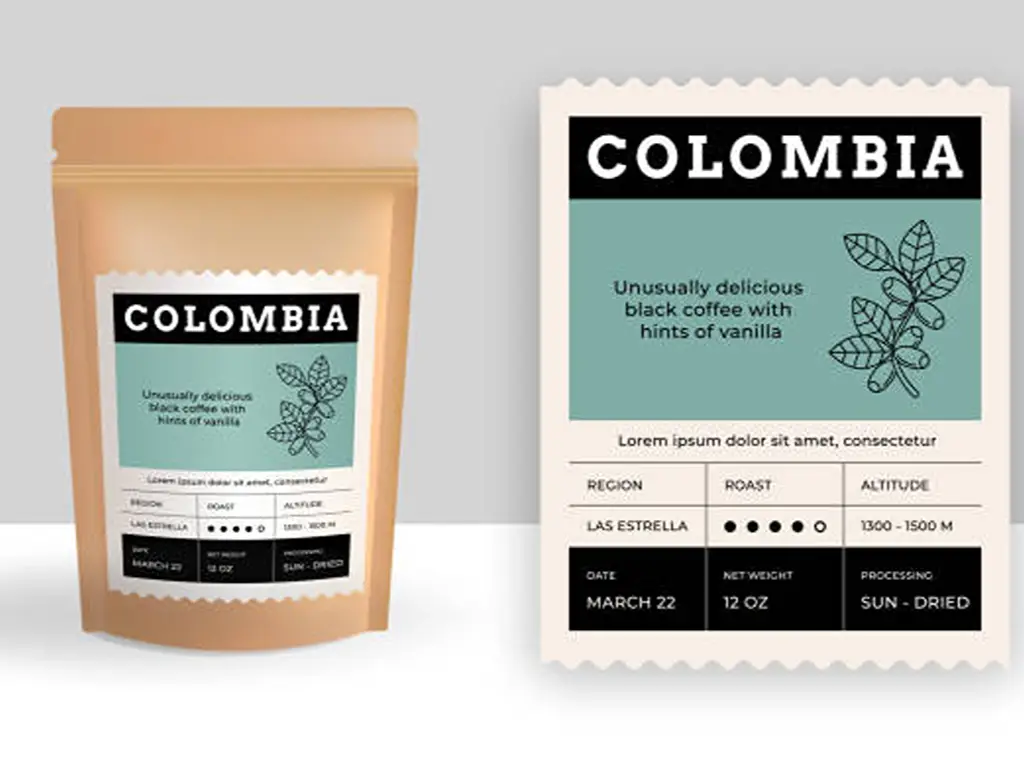
From Design File to Finished Bag: Choosing a Partner
The packaging partner you select defines how efficient your operations will be and the end quality of your product. Distributors and co-packers have to deal with numerous customers and short deadlines; it is a logistical nightmare to deal with different designers, material suppliers, and printers. The answer is a mature, one-stop packaging supplier.
Baishen is your centralized packaging center. We close the gap between imagination and manufacturing. Our customization service benefits are designed to give your brand a boost and make your operations more efficient:
● Expert Consultation: Our packaging engineers and designers are not only taking your order but also consulting on it. We check your design to make sure that it is technically possible, economically viable, and that it is optimized in terms of shelf appeal and product protection.
● Rapid Prototyping: We can convert your ideas into a digital proof of concept, usually within 24 hours. You can also order custom sample bags, and you can feel and touch your packaging before you decide to order a full production run.
● Unparalleled Customization: Bag type (stand-up, flat-bottom, quad-seal), size, material structure, functional features (zippers, valves, hang holes), and printing finishes (matte, gloss, metallic), all of which can be customized to your liking.
● One-on-One Service: You will be provided with a personal sales expert who will take your project through to completion and will maintain clear communication with you, also ensuring that your specifications are followed to the letter.
Choosing a partner with deep industry expertise like Baishen de-risks your project and guarantees a superior final product that arrives on time and on budget.
FAQs: Your Coffee Packaging Design Questions Answered
1. What should be on a coffee bag?
The name of your brand, logo, name/origin of coffee, and net weight are essential. In the case of specialty coffee, add tasting notes and roast date as well. This fact informs customer decision-making and creates confidence in the quality and freshness of your product.
2. Does it need a one-way degassing valve?
Yes, when it comes to freshly roasted whole beans. It enables the CO2 to be released and prevents harmful oxygen in maintaining freshness. In the case of ground or instant coffee, it is not usually necessary since they have already lost their gas.
3. Do I want a stock bag or a custom-printed one?
Startups or market testing should use stock bags with labels because they are cheap and have low MOQs. Select fully custom-printed bags to give a more professional appearance and a lower cost per unit on higher volume orders.
4. What is the primary distinction between digital and gravure printing?
Digital printing is most appropriate for short runs and multi-designs, low setup costs and quick turnarounds. Gravure printing is cylinder-based and is more economical in very large and single-design production runs, and is of premium quality.
5. What can I do to make my packaging more sustainable?
Select recyclable (such as mono-material PE) or compostable (such as PLA-lined paper) materials. A lighter-weight design can also minimize the amount of material used. The instructions on how to dispose of the bag should be clearly marked to assist the consumer.
